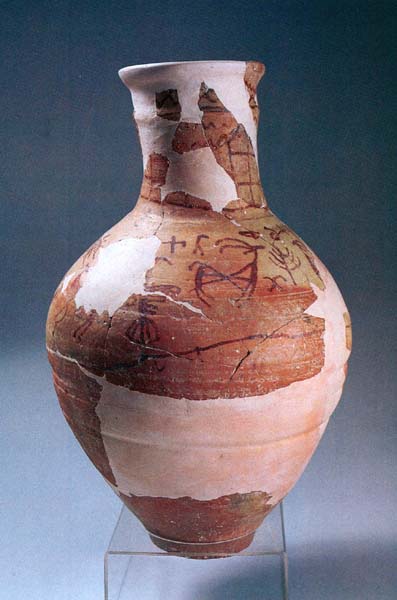Image Details

David Harris/Israel Antiquities Authority/Exhibited and Photographed:Israel Museum
The Lachish ewer. Discovered in a rubbish heap outside a temple at Lachish in 1934, the ewer (a type of pitcher with a handle) dates to about 1220 B.C.E.—the time when many scholars believe the Israelites were first emerging in Canaan. On the shoulder of the vessel—restored from fragments—is a stylized tree (at upper right in the photo and at far right in the drawing.) flanked by two ibexes with long, arching horns. The tree, consisting of a vertical line and three semicircles, represents the Canaanite goddess Asherah. Consort to the Canaanite gods El and Ba‘al and often depicted as a tree or a tree trunk, Asherah was a long-time nemesis to Israelite religion. The Hebrew Bible contains more than 40 references to her, frequently exhorting the Israelites not to worship trees as an Asherah.
A rare alphabetic inscription (running from left to right because the direction of Semitic writing had not yet been fixed) above the figures confirms the identification of the tree with Asherah. It refers to an offering to ’Elat, the feminine form of El, another name for Asherah; the word ’Elat is directly above the tree.
